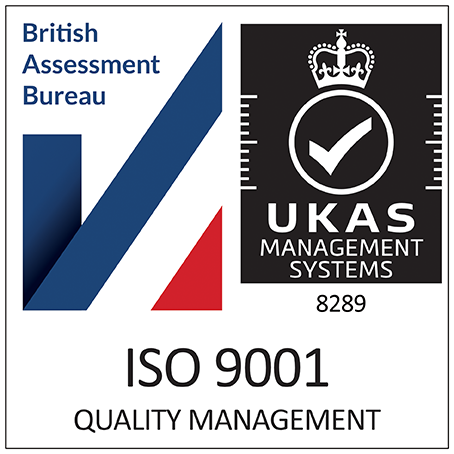By Andrew Chalmers
If you have been on LinkedIn within the last month or so, you may have noticed that the decision in Mazur v Charles Russell Speechlys LLP [2025] EWHC 2341 (KB) has caused a fairly strong and divided reaction. On one side of the aisle you have paralegals and legal executives, especially those who have been accredited through CILEX, who see this decision as undermining the valuable role they play in litigation. On the other side are those who see this decision as a long-overdue challenge to what is perceived to be sub-standard litigation practices.
This article will look at what the decision actually was, and what its practical implications are for the legal industry as a whole.
Mazur itself
The background of the case is relatively unimportant, but in summary the Appellants, Mrs Julia Mazur and Mr Jerome Stewart, were provided legal services by the Respondents, Charles Russell Speechlys. It claimed that Mrs Mazur and Mr Stewart did not pay for this work, and instructed Goldsmith Bowers Solicitors (GBS), a firm specializing in debt recovery.
The Appellants, however, took issue with the involvement of Mr Peter Middleton, ‘Head of Commercial Litigation’ at GBS, who was not a qualified solicitor (a fact which the GBS website is now careful to point out). Mr Middleton was essentially running the case, and performed a range of functions from drafting and filing the claim form and particulars to completing the directions questionnaire and reply to the Appellants’ defence.
The Appellants therefore claimed that the work done by Mr Middleton amounted to ‘conduct of litigation’, for which he was not an authorised person for the purposes of the Legal Services Act 2007 (LSA). This raised enough of a point of contention for Deputy District Judge Campbell to order a stay for three months, during which time Mr Robert Ashall of GBS, who is a solicitor, made a self-report to the Solicitors Regulation Authority (SRA). In a letter dated 2 December 2024, the SRA confirmed that employees of GBS were “permitted to undertake reserved legal activities due to section 21(3) [of the LSA]”, confirming that an unauthorised person may conduct litigation if under the supervision of an authorised person (Mr Ashall), while working for an authorised person (GBS).
This letter was particularly influential on His Honour Judge Simpkiss who, when hearing the application to lift the stay, accepted the SRA’s position that Mr Middleton was entitled to provide the service which he had on the basis that it was permitted by section 21(3) of the LSA. The application to lift the stay was successful, and the Appellants were ordered to pay the Respondent’s costs of the application of £10,653.
On appeal, the Appellants’ ultimately successful argument (ironically, mostly argued by Mrs Mazur who is not herself a qualified lawyer) was that this is simply not what the LSA says. The Appellants drew Mr Justice Sheldon’s attention to the context and exact wording of section 21 of the LSA, pointing out that the LSA clearly differentiates between an authorised person, who is permitted to perform reserved legal activities such as conduct of litigation, and a regulated person who falls under the regulatory supervision of one of the approved regulators set out in Part 1 of Schedule 4 of the LSA, such as the Law Society or the General Council of the Bar. Mr Justice Sheldon agreed that section 21(3) refers specifically to those who fall under regulatory supervision, and that being a regulated person does not equate to being an authorised person.
Mr Justice Sheldon also pointed out that sections 15 and 16 of the LSA specifically separate out the entitlement of an employee to carry out a reserved legal activity from the entitlement of an employer, and if an employee were entitled to carry out a reserved legal activity because their employer was, then section 16 would simply not make sense. It is worth pointing out that after the judge adjourned the matter to allow for representations from the Law Society and the SRA, the SRA changed its position entirely from its letter of 2 December 2024 to agree with the Appellants’ case (and was joined by the Law Society in doing so).
On the above basis, Mr Justice Sheldon was satisfied that Mr Middleton was not entitled to conduct litigation, and while he noted that this in itself did not invalidate the Respondent’s case (mostly as Mr Middleton had been replaced by a qualified solicitor), he did overturn the original costs order to one of no order as to costs.
Implications
In Mazur, Mr Justice Sheldon declined to engage in an assessment of what exactly qualifies as ‘conduct of litigation’, preferring instead to leave this issue open for the SRA to provide comprehensive guidance. The SRA’s current position, however, is that the decision does not change the position in law and that the previous guidance issued remains effective, which is potentially not the most helpful statement given that the SRA itself was apparently confused on its position until at least 2 December 2024.
The Law Society published its own practice note on 22 October 2025, which provides practitioners with more in-depth guidance and is a useful resource for anyone requiring further information.
Regardless, the meaning of ‘conduct of litigation’ remains nebulous, and was considered in the case of Baxter v Doble [2023] EWHC 486 (KB). Baxter did not have as immediate an impact as Mazur because it was focused on a CILEX Chartered Legal Executive who never claimed to be an authorised person, and solicitors’ firms did not think it applied to them on the basis of s.21 LSA (a view in which they then were supported by the SRA).
However, in a post-Mazur world the relevance of Baxter is further-reaching, and in Baxter Mr Justice Cavanaugh provides a very helpful and comprehensive review of the relevant authorities. Mr Justice Cavanaugh laid out a number of guideline principles:
- The starting point is the natural meaning of the words used in the LSA;
- These words should be construed narrowly, as the LSA is penal in nature;
- The substance of the actions should prevail over form;
- The question of what is and is not conduct of litigation is a matter of fact or degree in each case, and is down to assessment by individual judges; and
- To decide whether an individual has been conducting litigation, a judge should look holistically at all aspects of the case, rather than looking at each specific action.
Mr Justice Cavanaugh accepted that there were clearly certain activities that fall obviously into the definition provided by paragraph 4 of Schedule 2 of the LSA, with the most obvious being the “issuing of proceedings”. He also accepted that there were a number of actions which do not amount to conduct of litigation, such as providing legal advice, drafting and serving a notice under section 8 or section 21 of the Housing Act 1988, or anything done prior to the issue of proceedings, although the judge pointed out that the last example could be a factor in a judge determining whether an individual was conducting litigation, if their involvement continued post-issue.
Therefore, in a comprehensive 55-page judgment, Mr Justice Cavanaugh essentially found that ‘conduct of litigation’ means exactly what it says: looking at everything in the round, who would you say is actually doing the case? As substance prevails over form, the signature which appears on each document is not in itself definitive, so non-authorised individuals may be involved in preparing cases, but not to the extent where they are in charge of the litigation. So, if you are a solicitor with supervision over a number of paralegals or trainees, take a look at your caseload and ask yourself: am I the one driving these cases, or am I simply signing off on what my non-authorised colleagues are doing. If the latter is true, you are likely in breach of the LSA and could attract a penalty or be found liable for contempt.
Practicalities
Clearly, these decisions imperil the working practices of many law firms, as well as a significant number of cases already progressing through the system. Section 14 of the LSA makes it an offence to carry on a reserved legal activity when not authorised or exempt, and clearly the work produced through litigation done illegally is at a real risk. Just imagine the number of small claims or fast-track trials currently in progress where the lion’s share of both sides’ work was done by a paralegal or legal executive. In situations like this, a sense of mutually assured destruction (not to mention proportionality to the value at stake) affords a degree of protection, but where this is not the case this issue will likely be something which litigants need to be prepared to deal with. In Mazur itself, the Respondents were able to avoid further penalty or censure as Mr Middleton had been replaced in his leading role in the case by a qualified solicitor, which seems the only likely course of action most firms can take.
It is no secret that many firms, especially in certain areas, provide their services mostly through paralegals and other non-authorised individuals, with relatively few solicitors involved. These firms, one might presume, will now need to change their business models, although how they will be able to do so while the practical realities (which led to these practices in the first place) remain is a mystery. The cuts to legal aid have meant that in areas such as immigration many law firms operate on a quantity-over-quality approach to each case. The same is true in areas such as personal injury, where the introduction of tariff damages for certain injuries and the expansion of the fixed costs regime have limited what practitioners can hope to recover from each individual case. Law firms are now required to grapple with how they are going to afford to involve their solicitors in even the lowest value cases in a way which makes financial sense, and much of the negative reaction to the Mazur decision has arisen due to a concern about access to justice and increasing the costs of litigation.
Given that the decision in Mazur was based on a straightforward interpretation of the legislation it is difficult to see how it could be realistically challenged, notwithstanding the shock it has had on the industry. Legal executives and CILEX members of many years’ experience have now been informed that they are prohibited from conducting litigation, which must come as a shock to many who have for years been competently doing so. A fair portion of the blame must land at the feet of the regulators: the SRA’s 180-degree shift was already mentioned, but until 2023 the CILEx Regulation website explicitly told its members that they were entitled to conduct litigation. How they could have gotten their own regulation so wrong is best saved for another article, but the long-term impact of this decision is yet to truly play out.
Andrew Chalmers is a pupil at Guildford Chambers in our civil team.
If you require advice, or representation, you can contact the clerks on 01483 539131 or email them at clerks@guildfordchambers.com
Disclaimer
This article has been provided free of charge for information purposes only. Although care is taken to ensure the information is accurate no responsibility is assumed by the author or any member of Guildford Chambers for reliance on the content or the accuracy of such content. The information, and/or commentary, does not constitute legal advice and if you have a legal dispute you should seek advice from a solicitor or barrister about your case. Accordingly, no member of Chambers shall be responsible for any action you take or refrain from taking in reliance of anything in this article or case summary.

